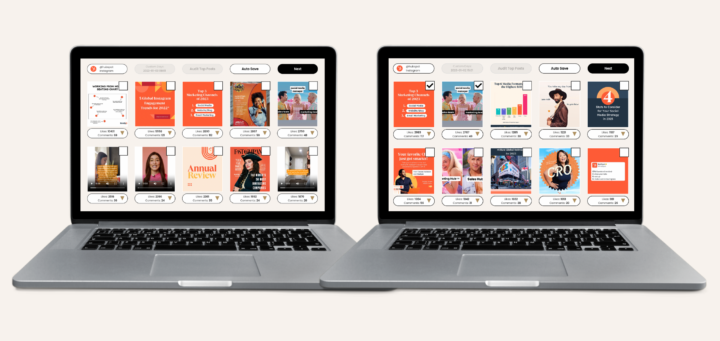Below is a summary of four paid advertising options that seem to work best for B2B businesses.
Display Ads
The Google Display Network is designed to help you strategically show messaging and branding to your audience at the right place and the right time, by displaying your ads across a variety of websites like Gmail, YouTube, news sites or blogs. With Display Advertising you can create text, image, interactive and video ads, which will be displayed on websites most relevant to what you are advertising, and shown to those who are the most likely to be interested.
Pricing of Display varies across four main categories:
- Cost per Click (CPC) — the advertiser pays every time a visitor clicks the ad
- Cost per Impression (CPM) — the advertiser pays for every 1,000 impressions on its ad
- Cost per Acquisition (CPA) — the advertiser pays for every acquisition made by a visitor. For example, each newsletter sign-up, or registration
- Flat Fee — the advertiser pays a flat, one-time fee, for a specific placement of ad.
Some consumers could argue that display ads come across as spammy, or they could even be blocked by Ad Blockers. Google has tried to counteract this with Responsive Display ad formats, where you enter in your text, images and logo, and Google will optimize your ads to improve your performance. These are popular ad formats, as “they show as “native” ads, and blend into the font and feel of the publisher’s site”.
Overall, the Google Display Networks reaches 90% of Internet users worldwide, and will help to raise awareness of your brand by promoting it on sites where your audience are already browsing.
Pay Per Click Advertising
Pay Per Click Ads are when you pay a search engine every time a certain result is achieved – like a customer clicking on an ad through to your website, or a customer calling your business from an ad.
- Google Ads — the advertiser writes an ad and bids on the keyword or search term that will make their ad show in the Google search results. The advertiser only pays when they achieve a pre-determined result, such as when people click the ad to call their business, visit their website or get directions to their store, up to a maximum daily budget.
- Bing Ads — similar to Ads, the advertiser writes an ad and bids on the keyword or search term that will make their ad show in the Bing and partner sites results. The advertiser pays when visitors click on the ad displayed, up to a maximum pre-determined daily budget.
For either search engine, the amount you bid on keywords helps to elevate your ads into a higher position above others, so those bids should best represent the value of that customer to your overall business.
LinkedIn Advertising
LinkedIn advertises itself as the B2B lead generator. As the world’s largest professional network, it’s been ranked as the #1 platform for B2B lead generation by marketers, so this is an obviously intriguing solution to look at for your B2B paid advertising strategy.
There are a few types of LinkedIn ad formats to familiarize yourself with:
- Sponsored Content — run native ads right in the main newsfeed, targeting specific audiences (which can be set based on user’s location, job industry, job description, or level of seniority or years of experience, for example).
- Sponsored Messaging — send personalized messages directly to targeted audiences through LinkedIn Messaging. Sponsored messages are only delivered when members are active on LinkedIn, and strict delivery frequency caps ensure your message gets noticed. You only pay when your message is delivered.
- Text Ads — similar to traditional PPC through Google Ads or Bing, LinkedIn text ads allow you to build custom ads, choose your target audience, and set your own bid and maximum budget with PPC or CPM pricing options.
LinkedIn advertising can be a very valuable B2B paid advertising platform, as users of LinkedIn generally use the platform for business-only related purposes, so the chance that they are already looking for a solution while browsing the site (and seeing your ad) is probably high.
Facebook Advertising
Facebook’s ability to target audiences makes it a useful advertising platform for B2C. However, it can also be a valuable tool for B2B as well, especially if your industry or business has an active Facebook community. Unlike LinkedIn, however, browsers on the Facebook site may not necessarily be looking for a product solution while using the tool, so they may not be as inclined to engage.
That said, Facebook has 2.45 billion monthly active users, which is obviously a massive user base. However, a massive user base also equals a massive amount of content; content that your ads need to compete with. Which is why Facebook has created the Audience Network, to extend your campaigns beyond Facebook, and target “More People, More Places, More Results”:
Use Facebook’s Audience Network to deliver video ads on apps and sites beyond Facebook where people spend their time. Ads in Audience Network can be delivered across devices into a variety of video and display placements, including native, interstitial, rewarded and in-stream video. Regardless of placement type, you don’t need to create and upload new creative assets—the ads will automatically render to fit the placement type with the same creative assets used on Facebook, though you always have the option to customize your creative.
- To start a Facebook ad campaign, you first need to select an objective (for example, “increase traffic”).
- Then, you select your targeted audience, and where you want to run your ad — this could be across Facebook, Instagram, or any of the apps or website available as part of the Audience Network (or across them all!).
- Finally, set your budget (either daily or lifetime) and the period of your campaign, and then the format of your ad: Photo, Carousel, Video, Slideshow or Canvas.
Once submitted, your ad will make its way into the ad auction so that Facebook can try to match the right ad with the right user, at the right time. This is different than a traditional auction that Google or Bing have for keyword bids, because the winner in this case isn’t the ad with the highest monetary bid, but the ad that creates the most total value.
—
Overall, there is no right or wrong answer for which platform to use in your B2B marketing strategy. The key is to choose the option(s) that work best for your audience and your business, which usually requires a trial and error process to figure out.


